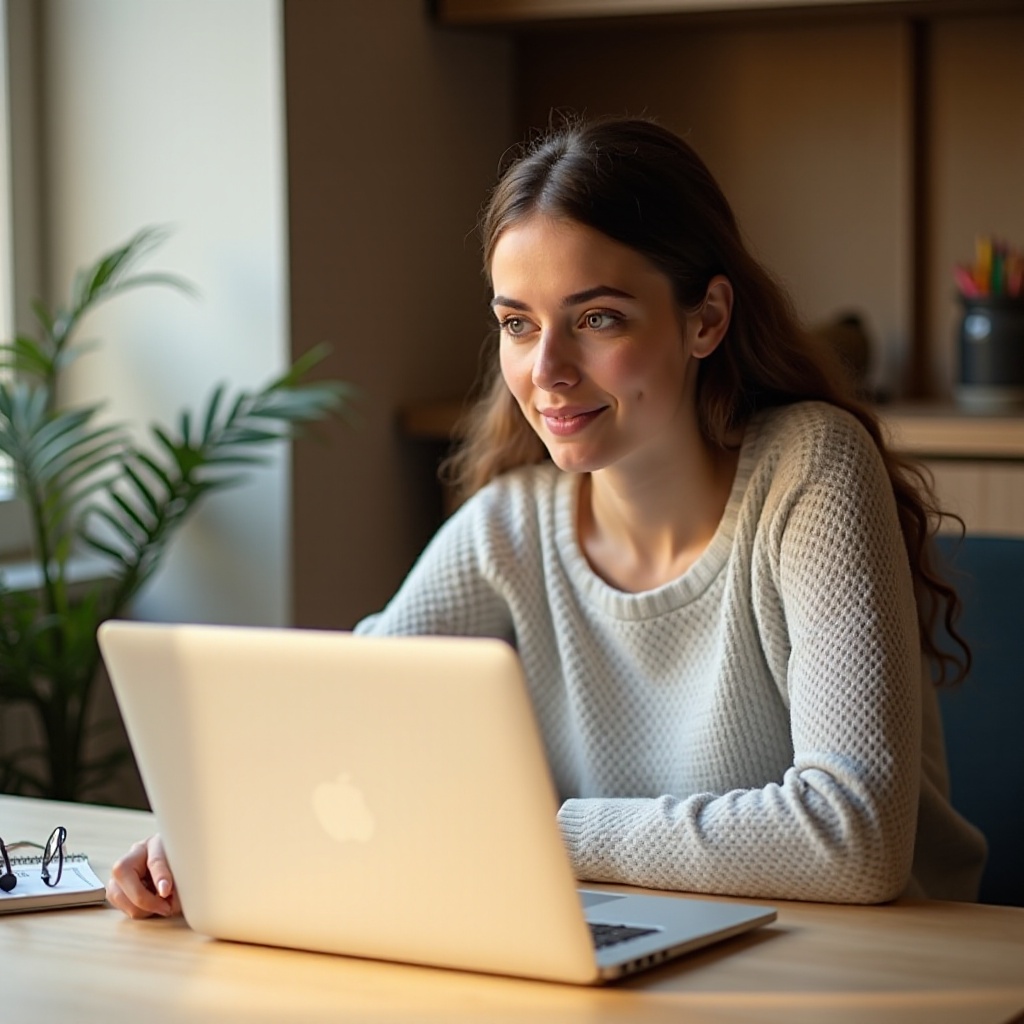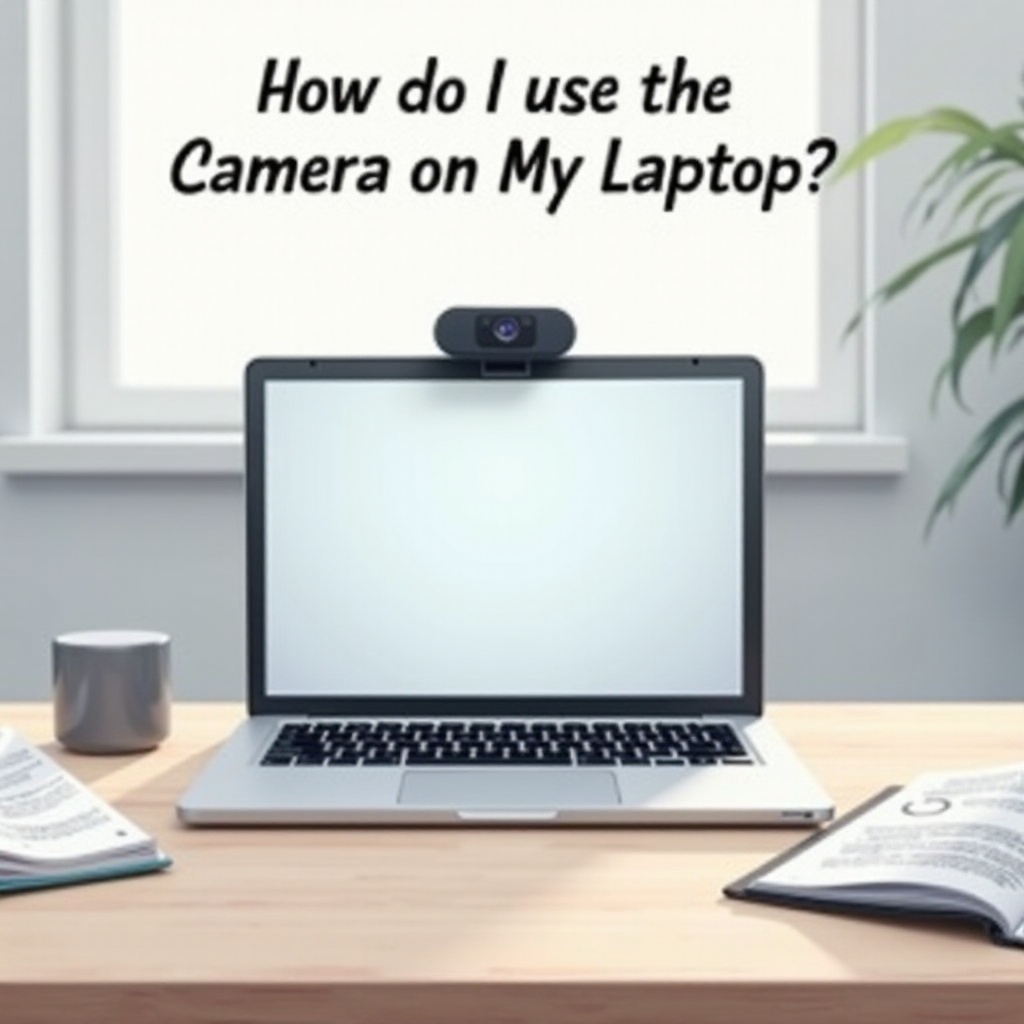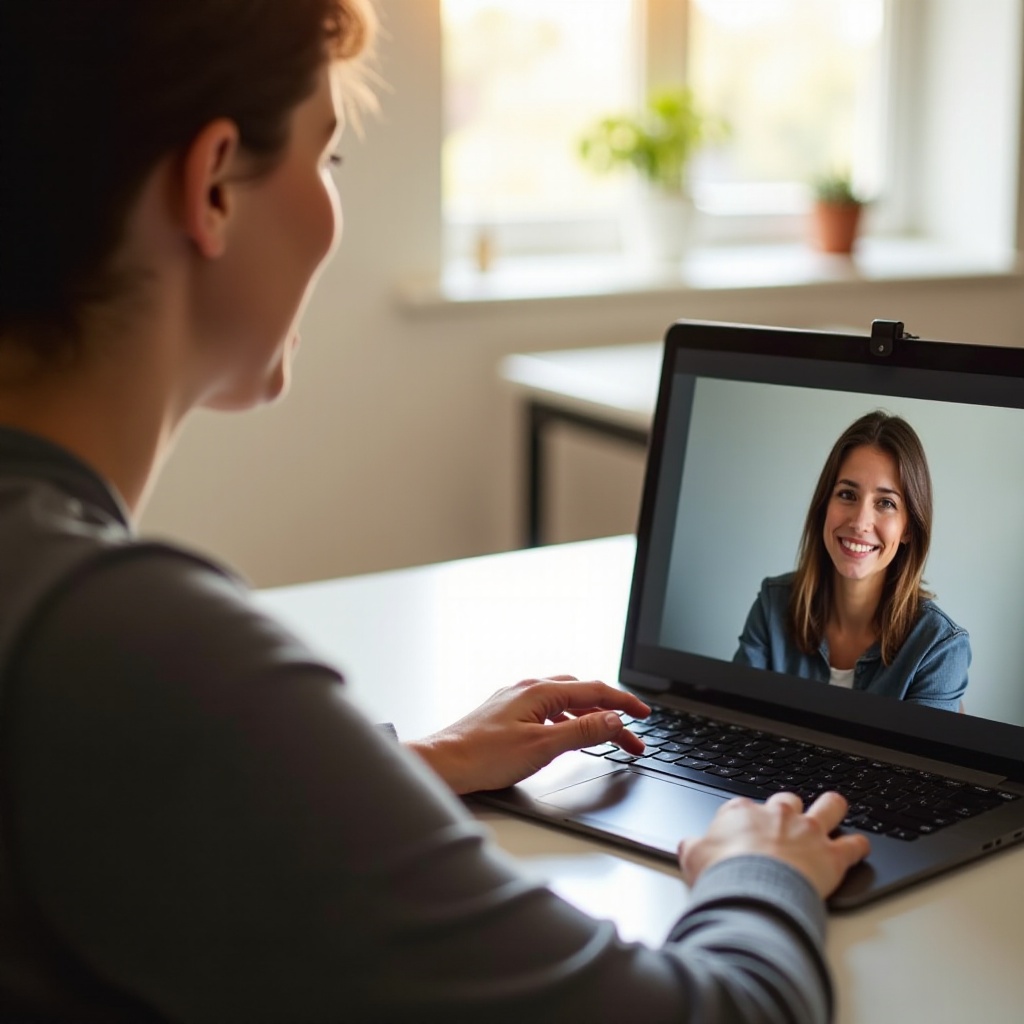Introduction
Laptop cameras have become an essential tool, offering diverse uses from professional video calls to creative content creation. Understanding how to use your laptop camera efficiently is crucial for improving your personal and professional communications. This guide simplifies the process, enabling you to make the most of your laptop’s capabilities.

Getting Started with Your Laptop Camera
Before delving into more advanced functionalities, it’s vital to confirm that your laptop has a built-in camera. Most modern laptops are equipped with this feature, but verifying it is important.
- Check for the Camera: Look at the top bezel of your laptop screen for a small lens.
- Access Camera Settings on Windows and macOS:
- Windows:
- Open the Start menu.
- Search and launch the ‘Camera’ app.
- If asked, allow camera access permissions.
- macOS:
- Open ‘Finder’ and go to ‘Applications.
- Open ‘Photo Booth’ or ‘FaceTime’ to access the camera.
Establishing these basic settings ensures your entry into a range of applications, from simple snapshots to more complex engagements.
Basic Setup and Common Issues
Configuring a laptop camera is typically straightforward, but you may encounter issues. Solving these promptly ensures your camera’s readiness.
- Enable the Camera in Device Manager (Windows):
- Type ‘Device Manager’ in the search box and open it.
- Expand ‘Cameras’ and right-click your camera.
- Select ‘Enable’ if it’s disabled.
- Common Setup Issues:
- No Camera Detected: Update drivers from your laptop’s manufacturer website.
- Poor Image Quality: Clean the lens and ensure proper lighting.
These solutions lay the foundation for smooth use and transition you into optimizing your camera for better performance.

Optimizing Camera Performance
Achieving the best results from your laptop camera requires careful optimization. Simple tweaks can significantly enhance image quality.
- Adjust Camera Settings:
- Use the camera’s app to tweak brightness, contrast, and exposure.
- Adjust these settings to suit various environments.
- Enhance Image Quality:
- Utilize natural lighting by facing a window or using soft lighting.
- Employ third-party software like OBS Studio or ManyCam for advanced settings.
Optimizing performance not only improves personal media quality but also enhances professional video conferencing.

Using Your Laptop Camera for Video Conferencing
Clear communication is crucial in professional settings. Ensuring your laptop camera is optimized for video calls can make a substantial difference.
- Best Practices for Professional Video Calls:
- Maintain eye contact by looking at the camera.
- Keep your background neat and distraction-free.
- Recommended Software and Applications:
- Zoom: Offers virtual backgrounds and touch-up features.
- Microsoft Teams: Integrates seamlessly with Office 365.
- Skype: Suitable for both personal and professional usage.
Using these tools and practices ensures you present yourself clearly and professionally, augmenting communication in all environments.
Creative Uses for Your Laptop Camera
Beyond professional applications, your laptop camera can serve as a creative outlet, offering numerous possibilities for hobbyists.
- Live Streaming and Content Creation:
- Platforms like Twitch and YouTube allow live streaming.
- Use OBS Studio to overlay graphics and effects on your stream.
- Time-Lapse Photography:
- Tools such as Time Lapse Tool enable you to create impressive time-lapse videos.
Embracing these creative opportunities highlights the laptop camera’s potential beyond conventional uses.
Privacy and Security Considerations
As camera usage increases, prioritizing privacy and security is essential to prevent unauthorized access.
- Protecting Your Privacy with Camera Covers:
- Use physical covers to shield your camera when not in use.
- Security Tips:
- Regularly update your operating system and camera drivers.
- Review app permissions periodically to ensure they’re appropriate.
By addressing privacy and security, you can operate your laptop camera with peace of mind, free from unauthorized access risks.
Conclusion
Mastering your laptop camera unlocks countless possibilities, from clear video calls to creative projects. With proper setup and security measures, you can navigate these opportunities effortlessly, enhancing both personal and professional interaction.
Frequently Asked Questions
How do I test my laptop camera to see if it’s working?
Open the built-in application like the Camera app on Windows or Photo Booth on macOS and ensure the camera activates correctly.
Can I use an external webcam with my laptop instead of the built-in camera?
Yes, connect it via USB and the system generally recognizes it automatically; select it in video call software settings if needed.
What should I do if my laptop camera has poor image quality during calls?
Check your lighting and clean the lens. Adjust app settings for better resolution or frame rate, and update drivers if necessary.
